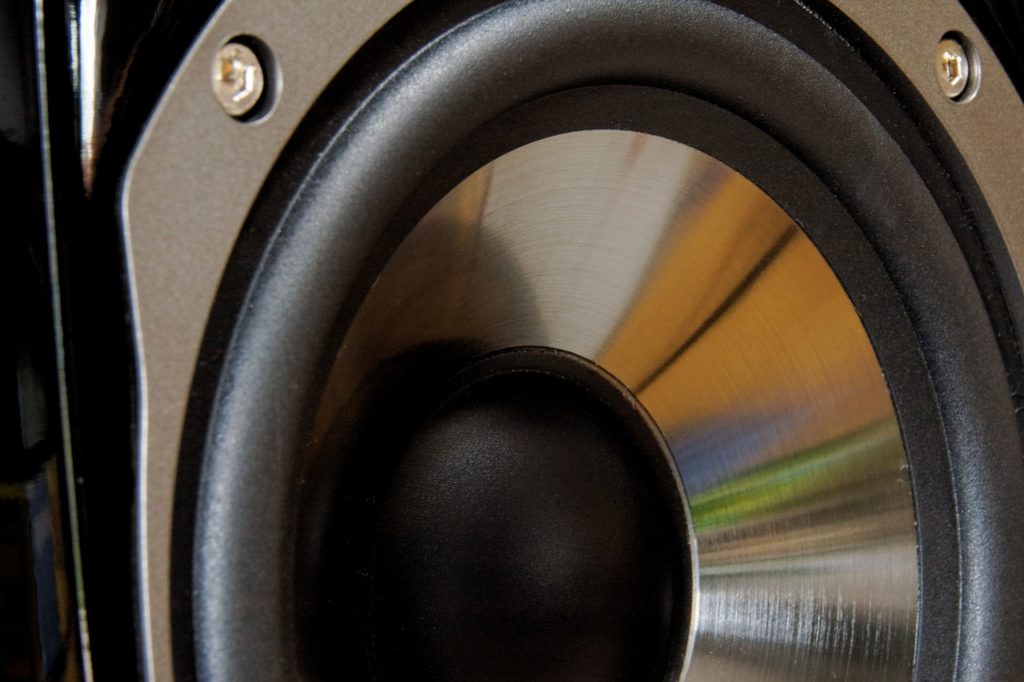
Bru-nO / Pixabay
Why is the music so loud?
Before we go any further, I want to make clear that I’m not talking about loud music, because I don’t mind loud music. I’m talking about bass levels that evoke the adjective “ridiculous” from someone who doesn’t mind loud music. Levels that make me wonder if there is some technical malfunction because there’s no way this could be intentional.
I spoke with some sound engineers and musicians from various churches and I asked them why the loud bass mix. Here are the answers I received:
“It Isn’t Loud”
Most were quick to assure me that the music wasn’t too loud from the perspective of safety, pointing out there is little danger of hearing damage at the volumes of even the loudest worship bands. I told them that I wasn’t worried about my hearing or my cholesterol or my blood pressure. Other concerns were in play.
I explained that it wasn’t the volume. It was the bass–the bass guitar and the bass drum were disproportionately high. I explained that the bass hum dug through my ears into the back of my jaw, that my shirt was vibrating against my body and that I worried that my buttons would vibrate open. I explained that sometimes I had to stop singing to check if my heart was in atrial fibrillation, that I was uncomfortable with feeling my esophagus vibrating and feeling ripples in my stomach acids. I explained that I think it is too loud because my bowels had been liquified. They nodded–they knew what I was talking about. They told me it wasn’t a mistake.
“We Love it Loud”
Who is the “we” of, “We love it loud”? Christendom? Is it everyone but me? True Christians? The worship team?
I pressed one song leader and he said, “Young people prefer the high bass mix.”
I have been to places where young people listen to music and dance. They do love it da bass. I usually leave. Is this what is expected of me on Sunday mornings.
The singing we do in church is corporate worship. A diverse body of believers worships God with our voices. We do so in cultural ways. We used to have one culture, but about a hundred years ago, youth culture began to diverge from that of older generations. So we now have two cultures–what does culturally expressed corporate worship look like when we have two distinct cultures?
[click_to_tweet tweet=”What does culturally expressed corporate worship look like when we have two distinct cultures? #Worship #PraiseAndWorship #WorshipLeader” quote=”What does culturally expressed corporate worship look like when we have two distinct cultures?”]
Do we go with the majority? Do we go with a mix? Do we go with a homogenization? Do we go with one of the subgroups and the other can lump it?
This is serious stuff and none of these options are very good. It seems to me the last one is the worst. I don’t think anyone has ever considered exclusively singing songs like “Jesus wants me for a sunbeam,” or bringing back the pipe organ. These are fine for their subgroup, but a minority ought not to dictate how the whole church worships. So why does it seem obvious that we need to crank up the volume and bass levels because “we” like it that loud?
I’m thankful that I attend a church that doesn’t crank up the bass every Sunday.
“People are Less Self-Conscious if It’s Loud”
Another answer to my question, “Why so loud?” was that people sing better when it’s loud because they feel less self-conscious.
This might be so, but how do you know?
Are they really less self-conscious if the music is still loud, but the bass is more balanced?
When I look around there are a lot of people singing enthusiastically, but these people sing enthusiastically whatever the volume or mix. I also see people not singing at all, but these folks don’t sing even when it’s loud. I know of at least one person that has stopped singing because he’s focused on his shirt buttons and his pulse. If there is one, perhaps there are others who find that the mix is getting in the way of worship. And again, I am not opposed to loud music. If you want to support tentative singers with loud music, you have my blessing. I am questioning the ridiculous.
The Liturgy of Loud
Corporate singing is a liturgical element of our worship services. As with all liturgical elements, it is what we learn in the repetition that makes rituals so powerful. What we learn isn’t just in our heads, it’s deeper than that–we learn it in our bones. Let’s look at what we learn through the singing of songs when we can consistently hear the voices of the worshipers.
- We learn that we have an individual voice that is important in worship.
- We learn that our imperfect individual voice blends with other voices to create something beautiful–the gift of worship to our Lord.
- We learn that worship involves active participation.
What do we learn from a very loud praise band with a high-bass mix?
- I learn that my individual voice is unimportant. When I cannot hear my own voice, we are ritually practicing the insignificance of the individual worshiper.
- We learn that the voices of the corporate body are also unimportant. When we can’t hear, we are ritually reinforcing the negation of Christian unity and community. If that sounds too strong, well then, we are at least missing the opportunity to ritually reinforce the importance of Christian unity and community. One of the greatest joys I derive from corporate singing is the sense of “the throng of worshipers.” It starts with hearing my wife singing with me, and then the sound of one or two voices behind us, and then I become aware of my place within a choir of hundreds of voices coming together in the praise of our Lord. It is a liturgy of unity. Sometimes, I cannot hear my own voice, let alone the strong voice of my wife’s strong alto 10 inches from my ear. When the mix and volume obliterate the sounds of all these voices we are ritually negating the throng.
- With the elimination of the sound of other voices, worship becomes highly individual. Perhaps this is why the same bass mix we are using in worship contexts is so popular in rave parties and dance clubs. Our culture is hyper-individualistic, so it makes sense that our music would reduce a collective experience to individual physical sensations. Marshall McLuhan was right when she said that the media is the message. What message is the media of rave/club music communicating? Do we want to communicate this message in Christian corporate worship?
- In Modern churches, worship can easily become passive. Part of this is because Modern worship resembles a secular concert, where our passivity is expected. The other part is that I don’t have a role to play in worship if I have no voice and can hear no others. Sure, I can worship individually, but that would be counter to the purposes of corporate worship.
All rituals, including those in church on Sunday, shape our identity as a people. Therefore, corporate worship should be designed to shape us into the people of God as active worshipers. (Importantly, we ought not to mistake movement with active worship.)
[click_to_tweet tweet=”When the mix and volume of the praise band obliterate the sounds of human voices we are ritually negating the worshiper in corporate worship. #Worship #WorshipLeader #PraiseAndWorship” quote=”When the mix and volume of the praise band obliterate the sounds of human voices we are ritually negating the worshiper in corporate worship.”]
[click_to_tweet tweet=”Perhaps the most important things about corporate worship is placing your voice among those of others. High bass and volumes remove the corporate from #corporateworship; I can’t hear anyone else. Worship is reduced to an Individual experience. #LoudWorship” quote=”Perhaps the most important things about corporate worship is placing your voice among those of others. High bass and volumes remove the corporate from corporate worship; I can’t hear anyone else. Worship is reduced to an Individual experience.”]
Dynamics and Earplugs
There are two arguments behind which advocates of a ridiculously loud and high bass mix advocates hide.
- Music needs a variety of dynamic levels. This is absolutely true. But one of them need not be absurdly loud. The first verse is usually fine because it’s just a soloist and an accompanying acoustic guitar and/or piano–we can hear ourselves and each other. The second verse builds. We have left corporate worship; natural human voices have been stifled. Chorus–now comes the bass, even the words from the amplified voices are incoherent. If we ever hear each other again, it’s on one of the repetitions of the bridge. [click_to_tweet tweet=”Is it still corporate worship if I’ve only heard the voices of other people during one verse of the song? #Worship #WorshipLeader #PraiseandWorship #LoudWorship #TooLoudWorship” quote=”Is it still corporate worship if I’ve only heard the voices of other people during one verse of the song?”]
- Ear plugs are a courtesy provided for those who find the volumes discomfiting. This is a nice gesture, but misplaced. First, the earplugs do nothing to block out the discomfort created by the high bass-mix. Second, earplugs do the same thing as the loud music does–they block out the voiced of other worshipers. The take the corporate out of corporate worship.
“The Bible Says It Should Be Loud”
Another answer to my question is that the Bible mandates the music should be loud.
One verse that is cited to support this assertion is Psalm 150:5.
“Praise him with loud crashing cymbals!”
Another, is 1 Chronicles 15 where David commands the people to play loudly on musical instruments, which they did. I certainly agree that our corporate worship won’t always be solemn or contemplative; much of it should be joyful and exuberant and some of it will be loud. It is appropriate to respond to God’s grace with enthusiasm.
Revelation 19:1 tells of the great multitude in heaven is crying out,
“Hallelujah! Salvation and glory and power belong to our God!”
There is no mention of a musical accompaniment here. This verse may suggest that we turn down the bass; the very fact that the words sung by the heavenly host are recorded in the rest of Revelation 19 indicates that they were heard and understood, despite the accompaniment, if there was any at all.
I’m no theologian, but I think that these verses have very little to do with volume, but are reflective of an attitude of worship. It is a bit of a hermeneutical stretch to suggest that they indicate a Biblical mandate that the electronically amplified instruments in enclosed spaces must approach 90dBA.
It strikes me that the Biblical defense of the bass mix is an attempt to justify one’s musical tastes with isolated texts.
“You’re Just an Old Fuddy-Duddy”
In my interviews with worship leaders and sound engineers, nobody told me that I was just an old fuddy-duddy. But since they were all 25 years younger than me, I wonder if they were thinking it.
Maybe I am a fuddy-duddy. When it’s too loud, I am agitated and lead away from worship into irritation. But even if I am the only one who feels that excessively loud and bassy worship music is irritating, we should evaluate the hidden consequences of the Liturgy of the Loud.
[click_to_tweet tweet=”Perhaps the most important things about corporate worship is placing your voice among those of others. High bass and volumes remove the corporate from #corporateworship; I can’t hear anyone else. Worship is reduced to an Individual experience. #LoudWorship” quote=”Perhaps the most important things about corporate worship is placing your voice among those of others. High bass and volumes remove the corporate from corporate worship; I can’t hear anyone else. Worship is reduced to an Individual experience.”]
Further reading: Here is the first in a series called “The Poetry of Worship”




 I recently came across a song written by some aspiring songwriters. I think they’ve been at this for a while now because it had more than a few things going for it. The music was particularly good. I’d be happy to sing this tune, and I suspected that I’d catch myself humming it during the week.
I recently came across a song written by some aspiring songwriters. I think they’ve been at this for a while now because it had more than a few things going for it. The music was particularly good. I’d be happy to sing this tune, and I suspected that I’d catch myself humming it during the week.


 Occasionally, during corporate worship, my focus is taken away from the God who is deserving of all my praise and drawn to the words upon the screen. Although I try to resist the distraction, it’s not easy. Sometimes I am diverted by a bit of bad theology. Yesterday, I chuckled because a line was just weird. Other times, it’s because I notice the words don’t really mean anything or are cliche. And then there’s the mediocre, or even bad, poetry.
Occasionally, during corporate worship, my focus is taken away from the God who is deserving of all my praise and drawn to the words upon the screen. Although I try to resist the distraction, it’s not easy. Sometimes I am diverted by a bit of bad theology. Yesterday, I chuckled because a line was just weird. Other times, it’s because I notice the words don’t really mean anything or are cliche. And then there’s the mediocre, or even bad, poetry.